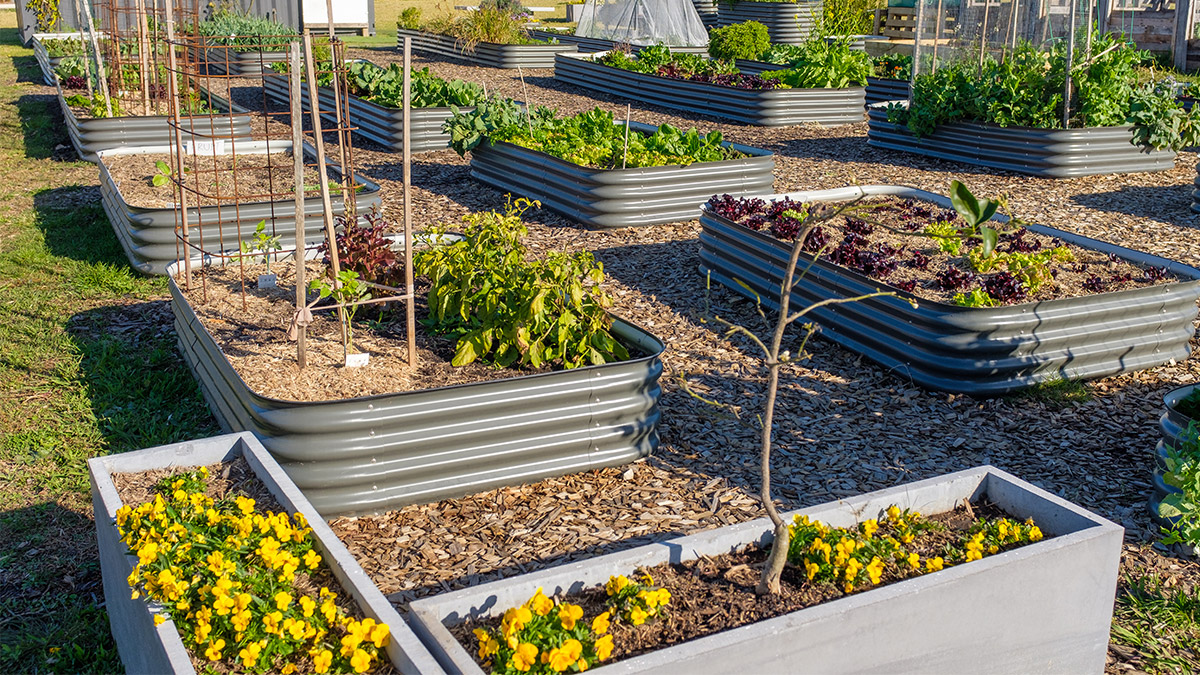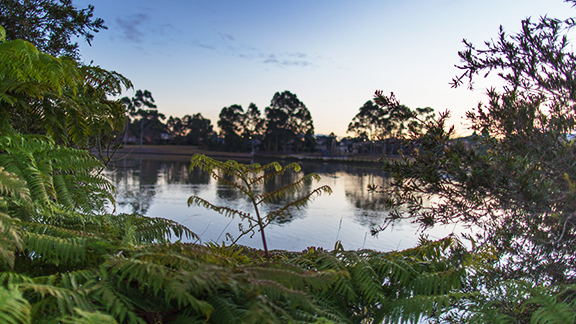
Starting A Community Garden
Community gardens improve the quality of life for individuals, neighbourhoods, and communities by providing a range of benefits through social activities which build a sense of belonging. They provide a place to come together to learn new skills, such as gardening, composting and nutrition; promoting active, healthy lifestyles for those involved.
What is a Community Garden?
A community garden is a community-managed space for non-commercial food growing and other gardening activities, accessible to and for the benefit of the local community.
It should be noted that Liverpool City Council does not support the creation of verge gardens and gardens in laneways and road reserves. The installation of garden beds on the nature strip affects visibility, pedestrian safety and traffic access.
Find An Appropriate Site
Finding a site is the first challenge for prospective community gardeners, however some are inspired by the potential of unused space to establish a community garden. A site assessment should be undertaken to ensure the location is suitable for the purposes of the community garden. There are a number of things you should consider when assessing your site.
Tenure and Use
- Who owns the land?
- What is the land use zoning and does it permit this activity?
- Do other people currently use the space? Will the garden impact on or be impacted by these activities (e.g. a local short cut or an illegal dumping hotspot)?
- What are the surrounding land uses? Will they conflict with or impact on the garden?
Suitability
- Is the site big enough? How many garden beds can it support?
- Is the site accessible, safe and secure? Have the Crime Prevention Through Environmental Design Principles been incorporated (e.g. well lit, fenced and gated)
- Is the land suitable to be used for an edible garden? (soil type, contamination issues, etc.)
- Is the site workable? Access to power and water? Storage for tools and horticultural
materials? Are there any underground services in the area?
What plants are already on site? Is it infested with weeds? Are there - trees that will shade the garden?
Stakeholders
- How do neighbouring residents feel about a community garden? Are there prospective
members for the garden? - Are there local community groups or businesses that might support the project?
(e.g. as a sponsor or partner)
Consult with the Surrounding Community
Community support is important on any project. Neighbours and the local community should be made aware of any plans to establish a community garden in their vicinity. This could include local residents, businesses, schools, and community organisations (e.g. church groups). This will allow you to get a sense of local support, identify and address concerns, and recruit members to your group.
Business and community groups can also provide invaluable support to the establishment of a group in the form of funding, materials, and labour. This could be a one-off donation or ongoing support. This kind of support should not be relied upon when planning your garden.
Ways to promote the proposal:
- Creating a flyer for a letterbox drop in the community;
- Doorknocking residents and visiting businesses and cafes with the flyer; and
- Advertising on local social media pages including Facebook groups.
Once established, you could also hold open days to further promote the garden, and boost membership and community good will.
Form A Committee
A garden requires a working group of committed people with a range of skills and experience. The size of the group depends on the size of the garden. Regardless of the size of the garden, a good management structure will contribute to the ongoing success of the garden.
It is important to have a range of skills in your committee, which should consist of 3-5 people. Identifying committee roles (e.g. Chairperson, Secretary, and Treasurer) can also to ensure responsibility is shared. It helps to have the roles and responsibilities of the committee enshrined in a Charter.
Community Garden Model
The committee will need to identify the type of garden they want for their group. There are several garden models that could be suitable to your project. Below are common models:
Communal
This model can incorporate a large number of people and assist members with limited knowledge or skills in gardening. Communal gardens are often managed collectively, with members deciding on crops and a roster for garden maintenance.
The group meets on harvest days to share produce equally, sometimes sharing with the wider community.
Allotment
Each member has an assigned allotment, either a whole or partial garden bed, for growing their own crops. The size of an allotted area varies, but is at least one square metre.
Individuals are responsible for maintaining their bed, including choosing and sourcing plants. Where agreed, produce can be shared or swapped.
It is recommended that members share their expertise with fellow gardeners to promote a sense of community within the garden.
Combination
A combination of the two, with a number of beds designated as communal for the growing of certain plants (e.g. herbs). This allows members to grow their own produce in their allotments, with certain plants being generally available for shared harvest.
Plan Of Management
A Plan of Management will inform all members how the garden will be managed. It should include:
- Organisational structure (i.e. the committee, rules for participation, meeting dates)
- Garden model
- Layout, identifying garden beds, water sources, etc.
- Species lists and planting schedules
- Pest management
Designing Your Garden
There are a number of important considerations in planning and establishing your community garden that will help ensure its long-term success. The following features must be considered when designing your community garden.
Services
It is important for the location’s existing services to be identified when designing your garden. This includes gas lines, water and sewer pipes, and power and phone cables. Identifying the location of services, via a ‘Dial Before You Dig’ check, will ensure services are not damaged during construction. It will also help to inform the layout and need for raised beds.
Water Management
In addition to services, note the location of taps and drains. Ensure there is a ready supply of water on site. Tanks should be utilised where rain water capture is feasible.
Also ensure that all standing water, such as in tanks, is covered to prevent breeding of mosquitos.
Waste Management
Consider how garden waste is to be managed. Consider on site composting and worm farms to turn garden waste and food scraps into compost for use in the garden. Bins should be kept secure so as not to attract vermin.
Shade and Sun
Ideally, your site should receive a minimum of 5 hours sunlight each day. Be mindful of what parts of the garden are shaded when considering placement of beds and plant selection.
Accessibility
The location of the garden and placement of the beds should consider those with limited mobility. Generous, level paths and raised beds should be included in the design of the garden.
Consideration should also be given to access by larger vehicles for construction and delivery of horticultural materials.
Safety
The garden should be well-lit and open, improving visibility for public surveillance. It is important that enclosed or hidden spaces are avoided. It is recommended that Crime Prevention Through Environmental Design Principles be considered in planning the garden.
Any dangerous items or hazardous substances (e.g. power tools and pesticides) should be stored in a secure location, preferably off site.
Approvals
Land Owner Consent
Please ensure that you have permission from the owner of the land to establish and operate a community garden on their land.
Community gardens on Council managed land will require a formal agreement with Council. However, please note that Council is currently not approving any new community gardens on Council land.
Development Consent
A community garden may require development consent on private land. However, some works and structures may not need development consent if they meet specific criteria under the State Environmental Planning Policy (Exempt and Complying Development Codes) 2008. These include:
- Garden sheds, fences, poultry houses;
- Landscaping structures, pathways and paving;
- Rainwater tanks, water storage containers; and
- Water features and ponds.
Council planning staff can help determine whether a development is permissible and identify where a development application is required. Contact Council on 1300 36 2170 or via the online enquiry form.


